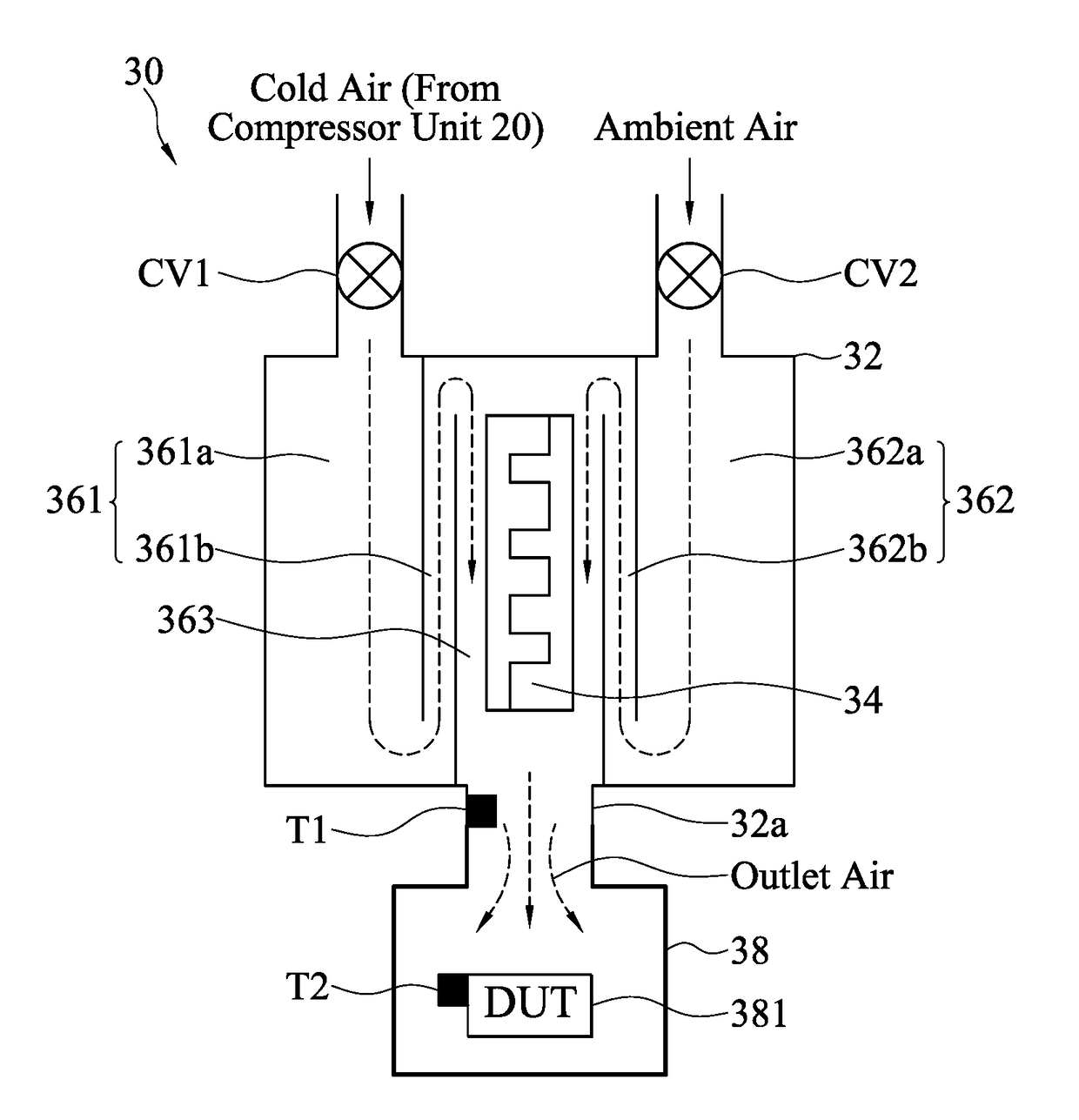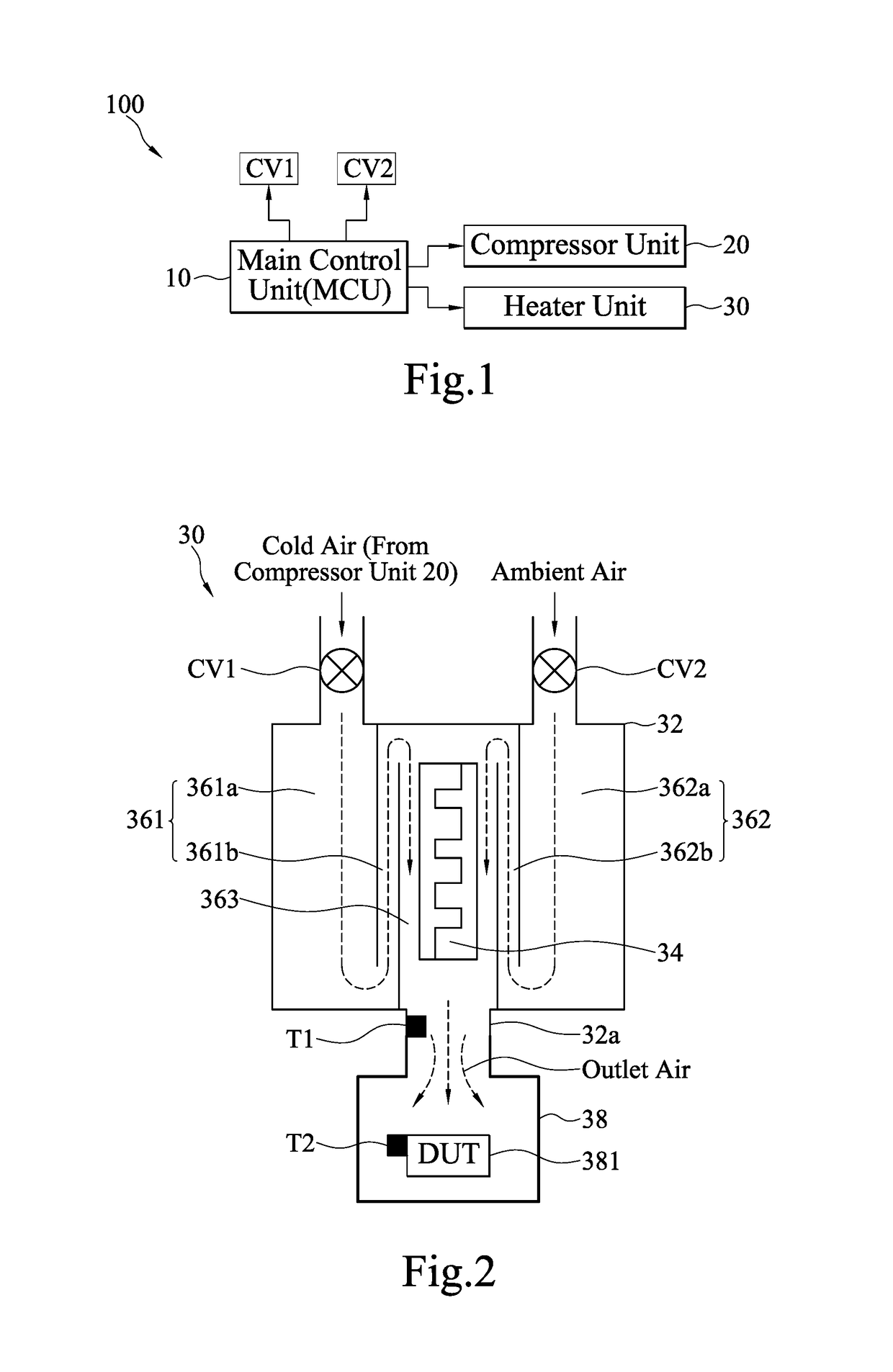Temperature control system and method thereof
- Summary
- Abstract
- Description
- Claims
- Application Information
AI Technical Summary
Benefits of technology
Problems solved by technology
Method used
Image
Examples
second embodiment
[0032]Furthermore, in the instant disclosure, a control circuit 304 further comprises a second PID controller 33b and an outlet temperature sensor T1 as shown in FIG. 5. The second PID controller 33b is coupled to the first PID controller 33a. In particular, the second PID controller 33b provides a second input signal as the first set point for the first PID controller 33a. The second input signal is based on the difference between a second measurement signal and a second set point. For the instant embodiment, the second measurement signal is produced by the measurement of the outlet temperature of the mixing chamber 32 of the heater unit 30. The measurement can be obtained by the outlet temperature sensor T1 coupled to the mixing chamber 32. Meanwhile, the second set point refers to the desired outlet temperature of the mixing chamber 32. For example, the corresponding powers of the measurement of the outlet temperature of the mixing chamber 32 and the desired outlet temperature an...
third embodiment
[0033]Another example of the instant disclosure is shown by a control circuit 306 in FIG. 6. Also adopting the cascade control scheme, the system 306 further includes a third PID controller 33c and a DUT temperature sensor T2. Like the previous embodiment, the third PID controller 33c is coupled to the first PID controller 33a. In particular, the third PID controller 33c provides a third input signal as the first set point for the first PID controller 33a. The third input signal is based on the difference between a third measurement signal and a third set point. For the instant embodiment, the third measurement signal is produced by the temperature measurement of the DUT, where the measurement can be obtained by the DUT temperature sensor T2 coupled to a DUT 381. The third set point refers to the desired temperature of the DUT 381 and can be given by the user. For example, the corresponding powers of the temperature measurement of the DUT 381 and the desired temperature of the DUT 3...
fourth embodiment
[0034]In a fourth embodiment as shown in FIG. 7, a control circuit 308 incorporates both the second PID controller 33b and third PID controller 33c. That is the third PID controller 33c is coupled to the second PID controller 33b, which is coupled to the first PID controller 33a. The third PID controller 33c provides the third input signal as the second set point for the second PID controller 33b, and the second PID controller 33b provides the second input signal as the first set point for the first PID controller 33a. The characteristics of the second and third input signal have already been explained in previous paragraphs, thus not further elaboration will be given here. Based on FIGS. 5-7, these multi-looped circuits provide alternative temperature control strategies. It should be noted that additional PID controller may be added depending on a user preference. For example, another PID controller may be utilized to control the heating process according to the mass flow rate of t...
PUM
 Login to View More
Login to View More Abstract
Description
Claims
Application Information
 Login to View More
Login to View More - R&D
- Intellectual Property
- Life Sciences
- Materials
- Tech Scout
- Unparalleled Data Quality
- Higher Quality Content
- 60% Fewer Hallucinations
Browse by: Latest US Patents, China's latest patents, Technical Efficacy Thesaurus, Application Domain, Technology Topic, Popular Technical Reports.
© 2025 PatSnap. All rights reserved.Legal|Privacy policy|Modern Slavery Act Transparency Statement|Sitemap|About US| Contact US: help@patsnap.com



